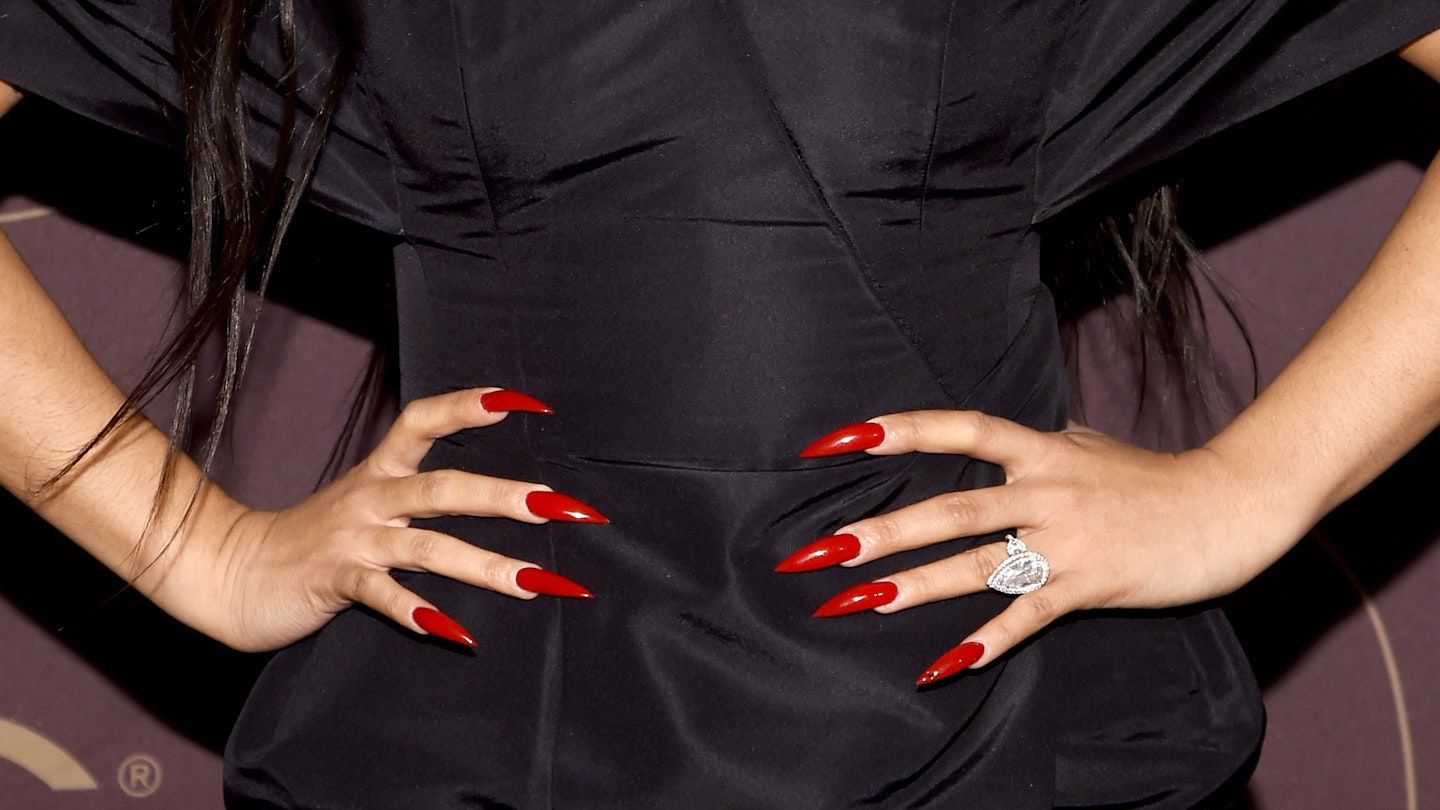Over the last 20 years, nail cosmetology has undergone a stratospheric stylistic elevation. Through the popularization of gel, shellac, stick-ons, acrylics have remained a steady favourite for Black women and the nail salon a space of comfort and self-care for those of us glamorously flouting the 'no nail extensions' rule at work. The cultural significance of acrylics isn't limited to that of an eccentric accessory, but as a marker of cultural identity.
From being dismissed as tacky, ghetto and gaudy to praised as cool, edgy and exotic, the true originators behind the movement have been forgotten, replaced by shiny catwalks and big budget shoots. Much before their hype, acrylics formed part and parcel of the modern Black woman’s beauty ritual, the one through which one goes from 0 to 100.
The beauty salon is its own world of transformation and magic, but it equally exists as part of the real world which comes with its own harsh reality - often not so pretty. Our beauty rituals are political. Whether it’s perming hair, waxing our upper lips or waist training, many people have never purchased a service solely because they like it. Getting cute is all fun and frills until we begin to interrogate our motivations.
Growing up on Black 90s sitcoms, I remember brightly coloured fingertips tracing the screens of every Destiny's Child music video, from Missy Elliot to Queen Latifah. In 90s sitcoms like Every Hates Chris, the nail shop is shown to be a refuge for Black women - away from constant demand of maintaining their familial homes and the constant grind and institutional discrimination they faced at work. Being able to enter a space where you can shed the week’s stresses over a simple infill to a technician who understands and can relate is soothing and reminds us that we are not simply exaggerating or dramatizing our own experiences.
Today, nail salons continue to serve a similar function for young Black women evading the harshness of the outside world, as a place of comfort and affirmation from friends. Store ownership by East Asian families has also incidentally made the space a place of exchange between people of colour. The entrepreneurship business model presents itself as a way for us to own the spaces of our own regeneration, but its success isn’t always guaranteed. Hackney’s popular WAHNails was able to ride the wave of mainstream gentrification from the streets of Dalston all the way to Central London’s Soho before announcing their closure after 10 years of trading this year.
Sometimes, especially when the wider world grips on to a piece of Black culture, we can get swallowed up by the same thing intended to help us. Sharmadean Reid, founder of WAHNails said in a documentary for Broadly that 'investors didn't understand the core of the business which was about the community and the people within the community' for which something as simple as nice nails is worth going the extra mile for.
While WAHNails closed its doors, nail shops remain a fixture of the British high street. Often dismissed as tacky by those who don't value the skill and design that goes into them, acrylics balance the flexible design that gel and shellac don’t allow with longevity not offered by just nail varnish.
Acrylics can be adorned by diamonds, gold leaf and 3-d corkscrews rocked by the likes of Cardi B. Despite being one of the few styles that continuously reinventing itself past the monotonous regularity of its competitors, it is rejected as 'rachet' because of the identity of its wearers.
This respectability policing doubles down on the dismissal of Black creativity while praising White counterparts for merely recreating the work of another artist. Fashion has an ironic relationship with people of colour, in this case – with Black women as wearers and Asian artists as designers. Trends often depend on the identity of wearers more than the item itself.
Just before writing this, I booked my usual full set appointment with my local nail salon and walked down, loyalty card in tow. After the usual hour-long fitting, filing, buffing and painting, I left feeling more myself than ever. Brooklyn rapper Leikeli47’s aptly named 2018 album Acrylic is a self-styled Bad Gyal Flex and I’m happy to confirm the exact same results apply to me.
The story of acrylics is a rich one. Their craftsmen and women who wear them proudly need celebrating, as their innovation is borrowed and rebranded by brands without their consent and taken to spaces, they themselves would have difficulty accessing. Which is why - for all all the damage the bonding of a monomer liquid with a polymer powder can do to a nailbed - we just can’t let fully them go.
READ MORE: There are seven different nail shapes - which should you go for?
